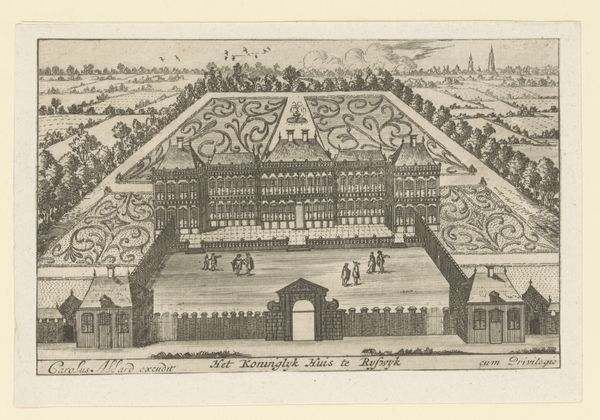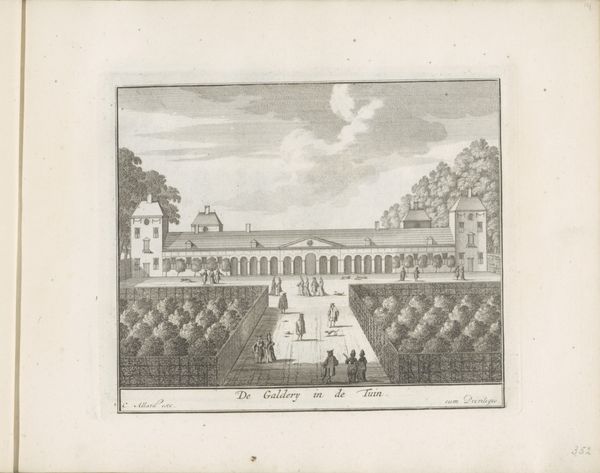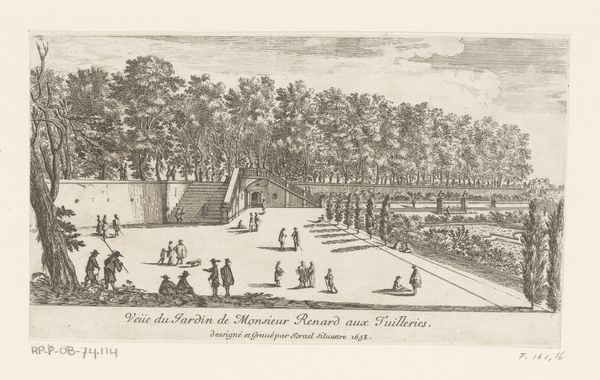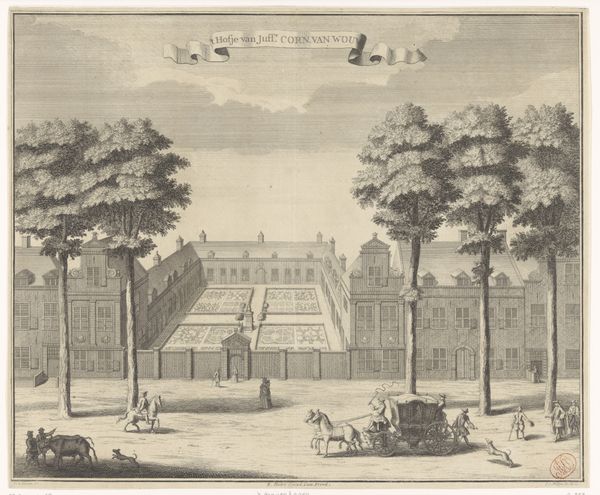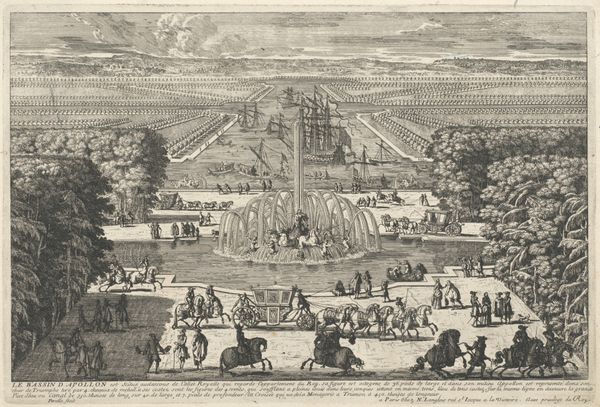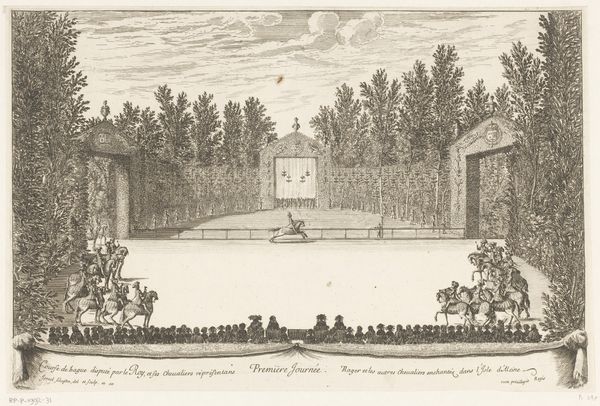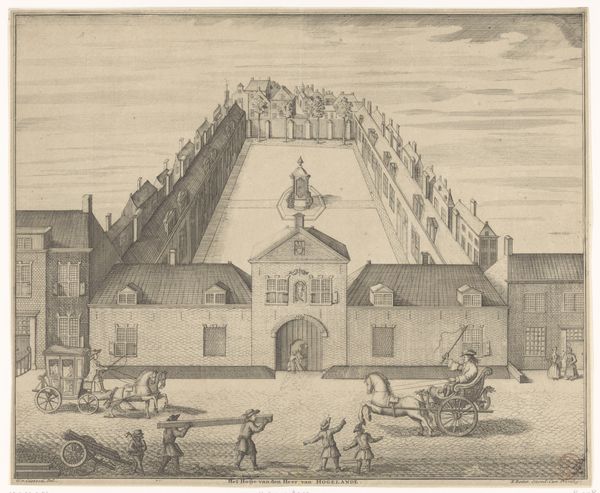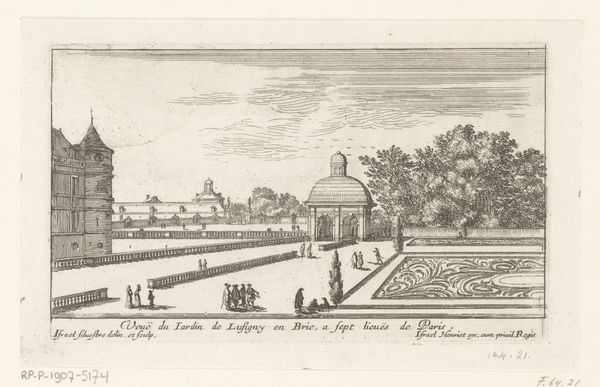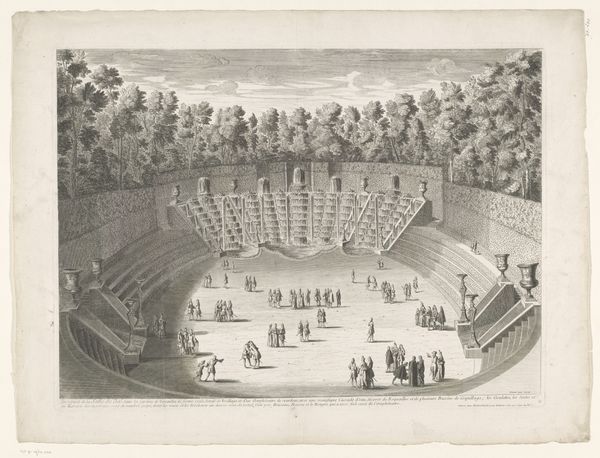
print, engraving
#
baroque
# print
#
cityscape
#
engraving
Dimensions: height 282 mm, width 340 mm
Copyright: Rijks Museum: Open Domain
Editor: Here we have a print titled "Gezicht op het Heilige Geesthofje te Den Haag," created sometime between 1730 and 1736 by an anonymous artist. It's an engraving and it depicts a cityscape. I’m immediately struck by how orderly and regimented the composition is. What's your interpretation of this piece? Curator: What grabs my attention is the engraving process itself. Think about the labor involved in meticulously etching these lines into a metal plate to create this view. It wasn't just about depicting the orphanage, but a specific process with specialized materials. This speaks to a consumer culture; prints like these made images and information accessible, playing a vital role in disseminating ideas about urban planning and social welfare in the 18th century. The "H. Geest-Huis," prominently labeled at the bottom, becomes a commodity, reproduced and distributed. Editor: So you’re focusing on the act of production, the physical making of the image, more than what's being represented. But isn't the place itself, this “H. Geest-Huis” also significant? Curator: Absolutely! The Geesthofje itself. The material conditions of life are embedded in it. What materials were used in construction? Who labored to build it? These aspects tell a story about power, resources, and social organization in the Hague. Engravings like this one helped establish ways of seeing the city itself as something to be ordered, consumed and perhaps even controlled. The precision and detail would have reinforced notions of rational urban management and governance. It challenges this divide between the 'high art' of painting and the 'low art' of printmaking and topography. Editor: That makes me rethink how I look at it. I was focused on the image, the content, and I missed this commentary on consumption. Curator: It is fascinating to consider how techniques of reproduction could turn a charitable institution into a readily available object, raising a few questions about what exactly they were hoping to get out of it. Editor: It is amazing to look at this as something mass-produced.
Comments
No comments
Be the first to comment and join the conversation on the ultimate creative platform.
